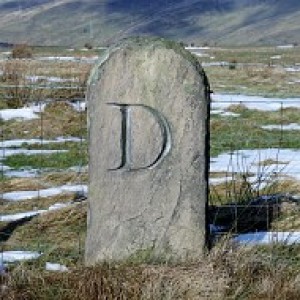Chingle Hall
Originally, the land where Chingle Hall now stands was owned by Ughtred de Singleton from around 1066. In 1260 Adam de Singleton built a small manor house known as Singleton Hall. It was surrounded by a moat and the studded oak front door was accessed via a small wooden drawbridge, which was replaced in the 16th century by a brick-built bridge. The door and bridge have survived to this day, although some of the moat has now dried up. The hall, renamed Chingle Hall, remained in the possession of the Singleton family until Eleanor Singleton, the last of the line, died in 1585. The house then passed to the Wall family through the marriage of William Wall with Anne Singleton. Their son Anthony Wall, once mayor of Preston, died there in 1601. In 1680 the house was extended westwards. The Walls owned the hall until the mid-18th century when the house passed to a local branch of the Singleton family.
From 1794 the house was owned by the Farrington family for some hundred years before being bought by the Longton family. In 1945, the house was rented by the Howarths before they bought the property in 1960. After Mr Howarth died the house stood empty and was badly vandalised, until Sandra and John Coppleston-Bruce bought the house in 1986 and restored it. The property was then bought by the Kirkhams in February 1995.
The current owner is an eminent professional person and local historian who has carried out detailed research into the history of Chingle Hall and the families who have lived there since its construction. The house and gardens are private property and not open to the public.
Chingle Hall has been at the centre of several alleged episodes of paranormal activity.
Inside the Chapel there are a number of wooden beams going across the ceiling. Some of these beams have strange symbols on them, possibly relics of earlier use elsewhere. When samples of the wood were scientifically examined,they were found to have a high salt content, and to be much older than the house indicating that perhaps they were ship's timbers being recycled.
It was reported that, during the 1970s one of the beams covering a section of the wall in the chapel spontaneously caught fire, and, just as quickly as it had started, inexplicably extinguished itself.
Some have made the claim that Saint John Wall was born in the Hall in 1620. It is unlikely that he was a member of the Preston Wall family. He became a Roman Catholic priest in 1641. Some have claimed that Chingle Hall was used as a place of worship by Catholics during the time of the Catholic Reformation when it was illegal to practice mass in Britain. In 1678 John Wall was apprehended at Rushock Court near Bromsgrove. He was taken to Worcester jail, where he was offered his life if he would forsake his religion. He declined. Brought back from Worcester, he was drawn and quartered at Redhill on the 22nd of August, 1679. His quartered body was given to his friends, and was buried in St. Oswald's churchyard. A Mr. Levison, however, allegedly acquired the martyr's head, and it was treasured by the friars at Worcester until the dissolution of that house during the French Revolution. The Franciscan nuns at Taunton claim to possess a tooth and a bone of the martyr. He was canonised by Pope Paul VI in 1970.

Comments
Sign in or get an account to comment.


